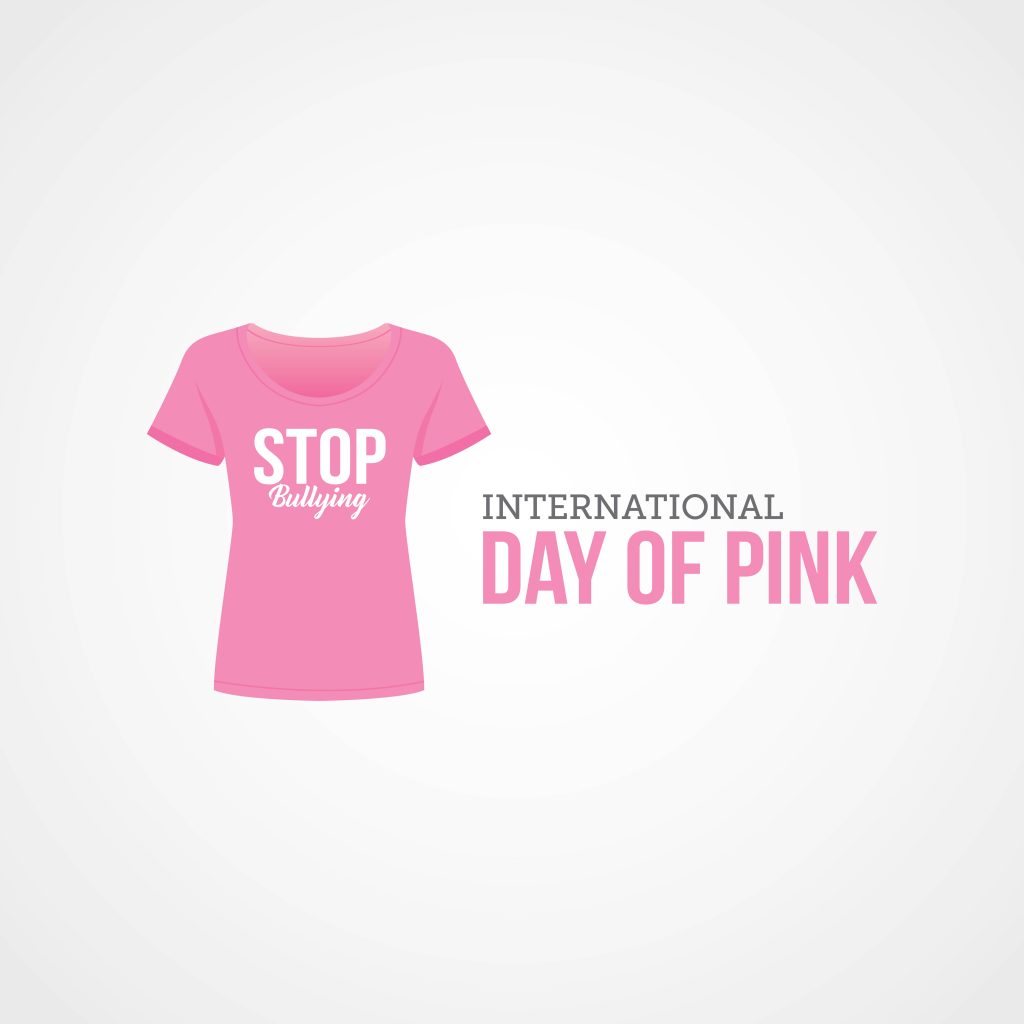Bullying is a severe problem in schools, workplaces, homes, and over the Internet. To raise public awareness, we celebrate Pink Shirt Day on the last Wednesday of February in Canada each year. It is an excellent opportunity to respect diversity and signify the stand against bullying. We wear pink shirts, host pink-themed parties, and run social media campaigns to assure victims of bullying that they are not alone.
Pink Shirt Day is far beyond a single day. It is, in fact, a global movement that aims to create a community where everyone feels safe, valued, and esteemed, regardless of age, gender, sexual orientation, ability, or cultural background.
A Brief History of Pink Shirt Day
Now a movement celebrated all around the globe, Pink Shirt Day has humble beginnings. It dates back to 2007 in Nova Scotia, Canada, when Chuck McNeill, a male ninth-grader, was threatened and harassed for wearing pink on the first day of school. The homophobic bullying was so provocative that it urged two twelfth-graders, Travis Price and David Shepherd, to stand against it and support the bullied student. They headed off to a discount store and bought 50 pink tank tops and distributed them among their classmates to wear the following day.
As they stood in the school hall handing out the shirts, Chuck walked in. His face shone with joy and excitement. The boys had already lifted a heavy burden off his shoulders. He was delighted to feel he was not alone and forgotten anymore. Since then, no one has ever heard of the bullies being involved in violent acts again.
This incident was the beginning of a new anti-bullying revolution. By the end of the week, hundreds of Berwick students in Nova Scotia were dressed in pink to support Chuck and other children subjected to discrimination. A little later, the word “Anti-bullying” got out online, and thousands of students turned up in pink, some from head-to-toe, to unite against bullying.

Following the rally, Rodney MacDonald, the former Premier of Nova Scotia, announced the second Thursday of September as the “Stand Up to Bullying Day” to commemorate these events. In 2008, the Premier of British Columbia, Gordon Campbell, eventually declared February 27th the regional anti-bullying day. The final decision set the last Wednesday of February as the “National Anti-Bullying Day” in Canada. The following year, “Boys and Girls Clubs” wore pink T-shirts that had “Pink Shirt Day” and “Bullying Stops Here” prints on the front.
It did not take long for the movement to reach other parts of the world. Anti-bullying campaigns began in 2008 when California passed its first law against cyberbullying. The event is now celebrated worldwide, from the US to New Zealand, on different days. This year, we celebrate the event on February 23rd in Canada by wearing pink and encouraging the whole community to spread bullying awareness and build positive relationships.
Why Combat Bullying?
Bullying is a pressing problem that needs to be dealt with seriously. It takes place in school, at work, or elsewhere in society and seriously affects mental health and well-being. Most studies reveal that people who have been bullied are more at risk of developing mental health issues, including depression, anxiety, and suicidal tendencies.
The American Department of Justice reports that one out of four students is bullied during adolescence. What is worse, bullying is often a recurring incident. In-depth research shows that over 70% of bullied students are likely to be harassed further in the future. Repeated bullying is so mentally destructive that it can lead to heightened suicidal tendencies. In 2010, Yale School of Medicine focused on bullycide to highlight the association between being bullied and suicide attempts.
As with any health issue, mental health problems can drastically influence a person’s studies, work, or social life. It has been reported that victims of bullying show a loss of interest in school activities, resulting in absenteeism and lower grades. Currently, 46% of Canada’s 16- and 17-year-old children are victims of harassment, verbal aggression, threats, and physical assault at school. This alarming rate urges us to do something about it on Pink Shirt Day and every day at schools, workplaces, neighborhoods, or any peer group location.
What Can We Do on Pink Shirt Day?
Pink Shirt Day is an excellent opportunity to raise awareness about diversity worldwide. We can do various activities to stand against common stereotypes meant to marginalize people who are different from us. Bullying stops when we respect all people regardless of their gender, race, sexuality, ethnicity, physical limitations, and the like.
Wearing Pink Shirts
Pink is a color conventionally associated with girls. But to us, it symbolizes that we will not tolerate any segregation and discrimination anywhere as a society. On this day, wearing a pink shirt sends a vivid message to people, particularly the LGBT community, that we care about them. Wearing a pink shirt can start conversations at schools and workplaces. Such conversations on diversity can be a giant leap toward healing and helping minorities.
Building Supportive Relationships
An effective way to combat bullying is to help our children, students, friends, and colleagues build positive and supportive relationships with one another. We can educate everyone to stop being bystanders and become upstanders when bullying occurs. Bullied children feel much more secure when their friends are always there, ready to help and support. We also believe that bullies are victims of ignorance, and unfair circumstances, so building a positive relationship can significantly improve their mental health and help them feel a sense of belonging.

Hosting a Pink-Themed Party
Pink Shirt Day is a delightful day for all of us to come together and promote anti-bullying. We can host a pink-themed party and ask everyone to show up in pink. We can decorate our schools, workplaces, and even the streets with pink streamers, serve pink sweets and cakes, and hand out informative brochures on anti-bullying campaigns. Also, sharing our party photos on social media can help raise public awareness about anti-bullying and its positive effects on our youth’s mental health.
Promoting Pink Shirt Day’s Kindness Activity Packs
There are currently various Pink Shirt Day/Anti-Bullying educational packages in the market. They provide blended resources and focus on expressing kindness in fun, engaging, and informative ways within the classroom. These packs come with different activities for students to participate in during Pink Shirt Week. Teachers can motivate students to use their creativity in various artistic ways and create brilliant art pieces about bullying and its adverse effects.
Donating to Youth Anti-Bullying Organizations
Pink Shirt Day is a golden opportunity to encourage everyone to donate to various anti-bullying organizations. Since 2008, CKNW Kids’ Fund and 980 CKNW have raised funds for several anti-bullying programs. So far, over $2.65 million net proceeds have been allocated to various charities that support youth anti-bullying and promote healthy self-esteem programs in BC and throughout Western Canada. With widespread support from these programs, children and youth are given hope for a future without bullying.
In 2021 alone, these funded programs influenced over 50,000 children and youth to practice empathy, compassion, and kindness:
- Leave Out Violence Society (LOVE BC)
- Crisis Intervention & Suicide Prevention Centre of BC
- Boys and Girls Clubs of Western Canada
- Vancouver Out On Screen Film and Video Society
- Stigma-Free Society
A Day to Lift Each Other Up
The 2022 Pink Shirt Day is coming, and we cannot wait to launch our campaign on our social media. This year, we ask you to join us in taking a stand against bullying and celebrating diversity. We plan to “Lift Each Other Up” and promote greater respect, acceptance, and inclusion for every child in our communities.
How about you? Are you hosting a pink-themed party in your school or workplace? What have you done so far to create a sea of pink and spread awareness? Please tell us in the comments.






